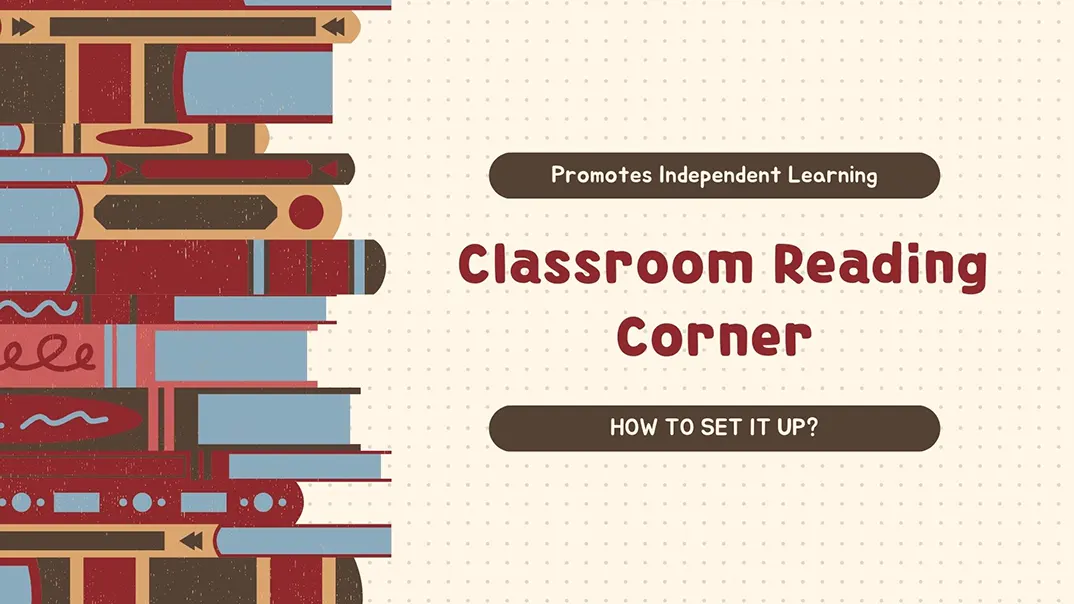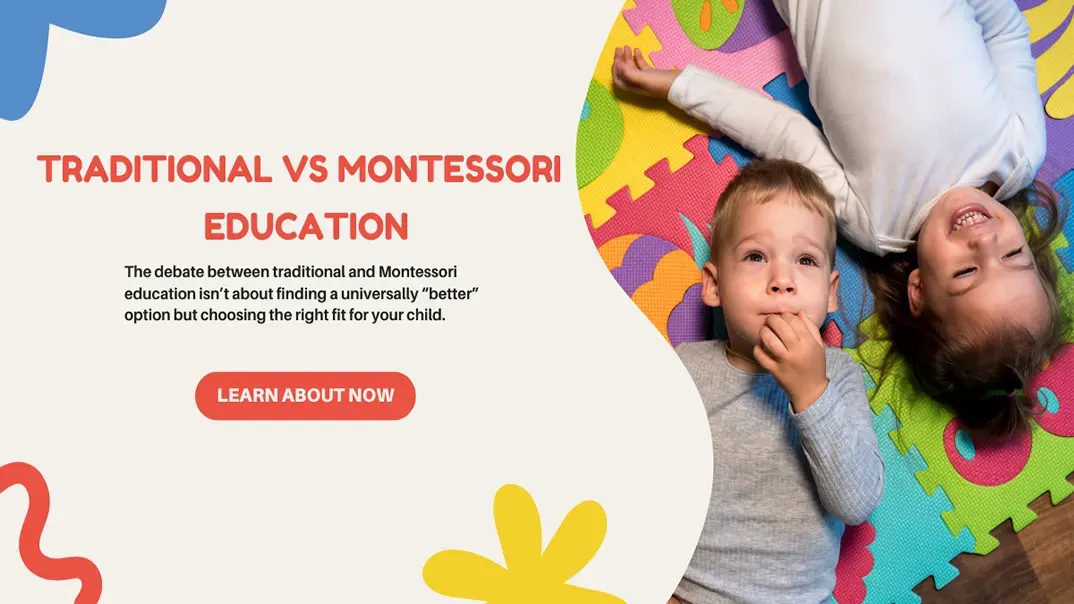A Montessori bedroom is intentionally organized to allow your child to easily navigate their space, access everything they need without adult assistance, and engage in activities that foster learning and creativity. The key elements include child-sized furniture that promotes accessibility, safety, and freedom, such as a low bed, functional storage, and a work area for hands-on activities. The layout should be simple, organized, and free from unnecessary distractions, allowing your child to focus on their tasks and play. In this article, we’ll guide you through the essential steps in choosing the right furniture and creating a layout that encourages independence while aligning with the Montessori approach.
Why Montessori Bedrooms Are the Perfect Choice for Your Growing Child?
A Montessori bedroom is designed to offer a balance of safety, independence, and creativity. It uses simple, functional furniture and toys, empowering your child to explore and learn independently. This child-centered approach to design promotes confidence, freedom, and an organized environment that encourages autonomy in everyday activities. By aligning with Montessori principles, your child’s bedroom can become a place of growth—physically, mentally, and emotionally.
Creating an Independent Environment
One of the most fundamental aspects of a Montessori bedroom is accessibility. Instead of traditional cribs or high beds, Montessori rooms typically feature low beds that children can easily escape independently. This encourages physical independence, as children can decide when and how they sleep. Additionally, furniture pieces such as child-sized tables, chairs, and shelves are placed within their reach, giving them a sense of ownership over their environment.
Encouraging Learning Through Organization
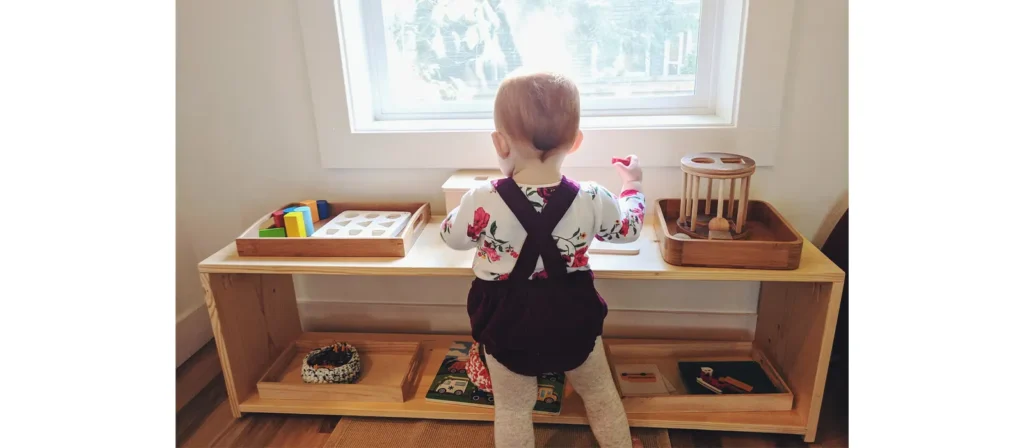
Montessori bedrooms are known for their minimalist aesthetic, which also serves an important function in promoting a clutter-free environment. When a room is well-organized, with toys, books, and learning materials arranged in a way that is easy for the child to access, it encourages them to take initiative. Children are likelier to engage in independent play, explore their toys, and tidy up when everything is within reach and stored neatly. This not only fosters responsibility but also helps with developing organizational skills at a young age.
Safety and Freedom for Exploration
The safety of a child is always a top priority. Still, in a Montessori bedroom, safety extends beyond just physical protection—it’s about creating an environment where a child feels free to explore and learn. Sharp edges, unsafe materials, or cluttered spaces are avoided, while soft rugs, cushions, and child-friendly designs are incorporated. The child is encouraged to move freely around the room, engage with objects, and create their own experiences—whether building with blocks, reading a book, or interacting with nature.
Fostering Emotional and Cognitive Development
A Montessori bedroom supports more than just physical independence—it also nurtures emotional and cognitive growth. By giving children the freedom to make decisions and manage their space, they develop confidence and a sense of responsibility. Cognitive growth is stimulated through the purposeful arrangement of learning materials like books, puzzles, or sensory toys, which promote problem-solving skills, focus, and creativity.
Creating a Calm and Nurturing Space
The calming atmosphere of a Montessori bedroom helps children feel secure and relaxed. Soft colors, natural materials, and minimalistic décor create an environment that doesn’t overwhelm the child. This serenity is vital for rest, and play is integral to a child’s development. A peaceful bedroom environment supports quality sleep and focused learning while creating a space where children can unwind and process their emotions.
Montessori Bedrooms Grow with Your Child
One of the most significant benefits of a Montessori bedroom is its adaptability. As your child grows, their needs and interests will evolve, and a Montessori room can change along with them. For example, as your child learns to dress themselves, you can incorporate accessible drawers for clothes. Or, as they become more interested in art, you can add a child-sized easel or creative space. This flexibility ensures the room remains functional and supportive at every stage of your child’s development.
A Montessori Bedroom as the Foundation for Growth
A Montessori bedroom is much more than just a place to sleep—it’s a space that fosters independence, learning, and emotional well-being. By embracing this child-centered approach to room design, you create a bedroom and an environment that will support your child’s development for years. From fostering autonomy through accessible furniture to creating calm and exploration, Montessori bedrooms provide the perfect foundation for your growing child.
How to Choose the Right Furniture?
Choosing the right furniture for a Montessori bedroom goes beyond simply picking out a bed or dresser. It’s about designing an environment that empowers your child, promotes independence, and supports their development. By selecting child-friendly, functional, and safe pieces, you can create a space where your child feels confident, capable, and free to explore.

Understand Montessori Principles for Bedroom Design
1. Simplicity and Minimalism: Reducing Clutter for Focused Growth
One of the foundational Montessori principles is simplicity. In a Montessori bedroom, simplicity isn’t just about aesthetics; it’s about creating a peaceful, distraction-free environment where a child can focus, play, and relax. This means avoiding unnecessary decorations, complex designs, or an overload of toys. A minimalist approach to bedroom design allows your child to engage more meaningfully with the few objects in the room.
Reducing clutter allows your child to focus on their tasks without feeling overwhelmed. Fewer distractions also mean they have more room for imagination and creativity. The key is to have only the essential items in the room and to store everything in an organized, accessible way. When your child needs a toy, book, or material, they should be able to find it quickly and easily. The bedroom should encourage free movement and active learning.
2. Accessibility: Furniture and Tools Within Reach
Another key Montessori principle is accessibility. This refers to placing everything within your child’s reach so they can act independently without needing constant assistance. Furniture, toys, and books should be child-sized, which promotes physical independence and helps your child feel a sense of ownership over their space.
For example, a low bed allows your child to climb in and out of bed independently, promoting confidence and autonomy. Similarly, low shelves and accessible storage bins allow them to retrieve and return toys or books as they wish. In a Montessori bedroom, everything should be designed so that the child can care for their own needs, whether choosing their clothes, making their bed, or organizing their toys.
3. Natural Materials: Creating a Connection with Nature
Montessori principles emphasize the importance of using natural, non-toxic materials. Choosing furniture, toys, and decor from wood, cotton, linen, and other organic materials promotes your child’s health and fosters a connection to nature. Natural materials feel pleasant and add warmth and beauty to the room without overwhelming the senses.
Using natural materials is about safety and creating a calming, soothing atmosphere in the room. Wood has a timeless, organic quality that helps establish a peaceful environment, while fabrics like cotton and linen are breathable and soft. These materials are also durable, which is important for children’s furniture, which needs to withstand everyday wear and tear.
4. Order and Organization: Encouraging Responsibility and Independence
In Montessori philosophy, order is essential to a child’s development. A well-organized bedroom helps children feel safe and secure because they know where everything belongs. This sense of order also teaches responsibility as children learn to care for their possessions and return items to their rightful place.
To promote order, it’s helpful to arrange furniture and materials logically. For example, place books on lower shelves so your child can pick out a book whenever they want. Label toy bins with pictures or words so your child can easily identify where things go. When children can take ownership of their space and understand how to maintain it, they feel a sense of pride and accomplishment.
5. Freedom of Movement: Designing a Space for Exploration
One of the most important Montessori principles for bedroom design is freedom of movement. A child should feel free to explore their room, whether climbing on their bed, walking around the space, or playing with their toys. The room layout should facilitate easy movement, with enough space for crawling, rolling, and walking.
Avoid overcrowding the room with bulky furniture or too many decorative items. Instead, prioritize open areas where your child can engage in physical activities or imaginative play. This type of space encourages children to move freely, which is crucial for their physical development and coordination. A Montessori bedroom should not feel restrictive or confining but should encourage exploration and adventure.
6. Aesthetic Balance: Creating a Calming, Stimulating Atmosphere
While simplicity is essential, the aesthetic of a Montessori bedroom should also support a child’s development. A Montessori bedroom is designed to be calming and stimulating, providing an environment that encourages focus, rest, and creativity. Soft, neutral colors create a serene atmosphere, while natural light enhances the sense of openness and warmth.
The key is to strike a balance between calm and stimulation. Use bright, engaging elements like colorful artwork, soft rugs, or playful textiles to inspire creativity. At the same time, avoid overwhelming your child with too much visual input. The idea is to create a harmonious, welcoming room conducive to various activities—from quiet reading to active play.
7. Encouraging Learning and Creativity Through Thoughtful Design
A Montessori bedroom isn’t just a place to sleep; it’s a space that encourages learning and creativity. Including educational materials like puzzles, books, or art supplies within easy reach allows children to engage with their interests and explore new concepts independently. The room design should facilitate this engagement by providing various learning opportunities without overwhelming the child. For example, you might include a small art station with child-sized supplies or a shelf with books related to your child’s current interests. These elements help your child become active participants in their learning, which is at the heart of the Montessori method.
Transform Your Classroom with Custom Furniture Solutions
9 Must-Have Items for a Montessori Bedroom Setup
1. Montessori Floor Bed: Encouraging Independence from the Start
The floor bed is arguably the most iconic feature of a Montessori bedroom. Unlike traditional cribs or toddler beds, which confine children to a space, a Montessori floor bed allows children to move freely in and out of bed. This is crucial for fostering independence and helping children develop a sense of self-reliance from a very young age.
| Aspect | Montessori Bed | Traditional Bed |
| Design | Simple, low-to-the-floor design, often with an open frame. | Varied designs, typically with higher frames and more complex structures. |
| Height | Low height means it is easy for children to get in and out of bed safely. | Higher height makes it difficult for young children to get in and out without assistance. |
| Independence | Encourages independence by allowing children to move in and out of bed freely. | There is less emphasis on independence, as children may need help getting in or out. |
| Safety | Built with safety in mind, reducing the risk of injury from falling. | There is a higher risk of injury if the child falls out due to height and lack of protective barriers. |
| Space Efficiency | Ideal for smaller rooms, it fits well in shared or compact spaces. | Requires more space due to the larger size and bulkier design. |
| Transition | It is easier to transition from crib to bed due to its low height and open design. | It is a more challenging transition from the crib, as the child may struggle with the height. |
| Functionality | Supports autonomy with easy access to toys, books, and educational materials. | Primarily designed for sleeping, with less focus on autonomy or interaction. |
A floor bed works by placing directly on the floor or a low frame, ensuring your child can climb in and out without help. This simple piece of furniture encourages your child to take control of their sleep routine, an important milestone in developing independence. In the Montessori approach, children are trusted to make choices about their bodies, and a floor bed supports that autonomy by allowing them to decide when they want to sleep or wake up.
Moreover, the design of the bed should be minimalistic, with rounded edges for safety, and made from natural materials like wood. The bed’s simplicity fosters a peaceful, clutter-free environment, and the low height ensures your child can easily navigate it independently, reducing feelings of helplessness.

2. Accessible Bookshelves: Creating an Inviting Reading Space
A key component of the Montessori bedroom is creating an environment that encourages a love of reading and independent exploration. Low, accessible bookshelves or shelves children can reach independently are a must. Unlike traditional high bookshelves, Montessori-inspired bookshelves allow children to pick their books, fostering a sense of ownership over their learning materials.

A well-organized bookshelf with a curated selection of developmentally appropriate books will enhance your child’s literacy and cognitive development. Organize the books by size or subject, making it easier for your child to choose their reading material based on their interests. This promotes independence and decision-making skills, as children can assess which book interests them the most.
3. Child-Sized Table and Chairs: Supporting Practical Life Skills
A child-sized table and chair set is another essential piece of furniture in a Montessori bedroom. Montessori education’s heart is the belief that children learn best through hands-on experiences. A table and chair that are appropriately sized for your child allow them to engage in activities like eating, drawing, or even playing with educational materials independently.
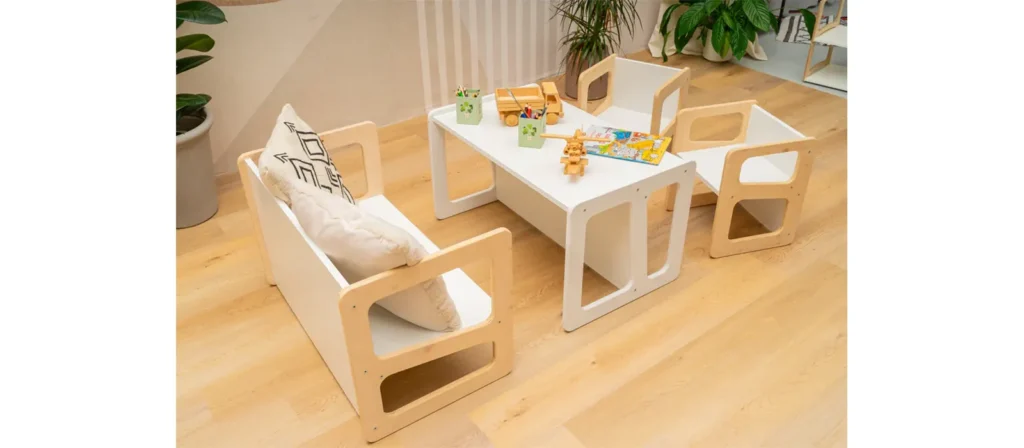
The table should be low enough for your child to sit at without feeling restricted. This allows them to participate in daily activities like eating breakfast or having a snack while feeling in control of their environment. Additionally, a child-sized chair enables your child to sit down and stand up without assistance, further encouraging autonomy and fostering a sense of competence.
4. Montessori Mirror: A Tool for Self-Exploration
Mirrors are often overlooked in Montessori rooms but are critical in promoting self-awareness. A Montessori mirror is typically a full-length mirror placed at the child’s height. This allows your child to observe their movements and explore their reflection, fostering a sense of individuality and self-awareness. It encourages children to practice self-care skills such as brushing their hair or dressing themselves independently.
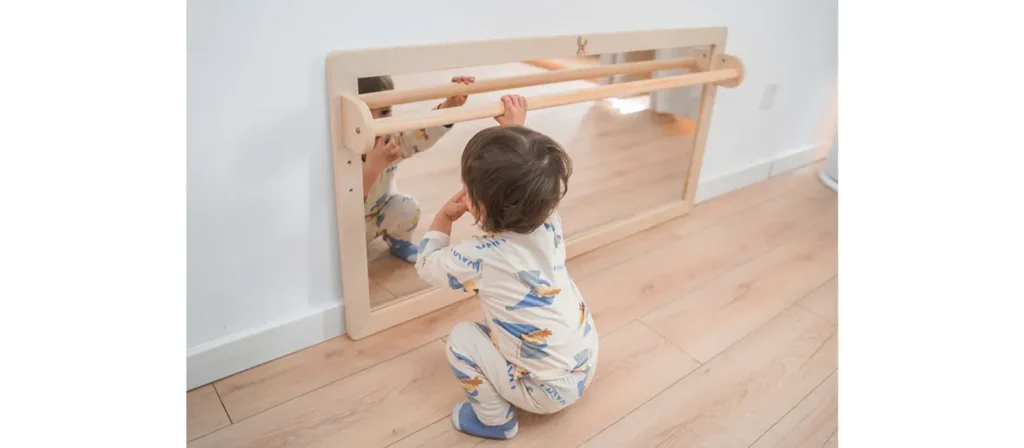
In addition to helping children with self-recognition, mirrors can also support movement skills. Children can observe their actions in real-time When they practice walking, balancing, or moving in different ways. This feedback loop helps them develop motor skills and encourages self-expression.
5. Wardrobe or Clothes Rack: Fostering Responsibility
A key aspect of Montessori education is promoting responsibility and independence. A low wardrobe or clothes rack allows your child to choose their clothes and dress themselves. This is an important skill for both practical life and emotional development. When children can choose their outfits, it fosters decision-making, boosts confidence, and cultivates a sense of responsibility.

The wardrobe should be easily accessible and organized, so your child can understand. You might want to use simple bins, baskets, or hanging rods where clothing is sorted by type or activity. By placing the clothes at the child’s level, they can practice making choices independently and develop a sense of order. Having access to their clothes empowers children to take ownership of their appearance. This act of self-dressing encourages independence, promotes practical life skills, and supports emotional growth by allowing children to choose themselves.
6. Cabinet for Storage: Promoting Organization and Accessibility
A well-designed cabinet is an essential piece of furniture in a Montessori bedroom. In a Montessori environment, simplicity and organization are key to creating a space where children can function independently and confidently. A cabinet is an excellent solution for storing everyday items and special possessions while promoting tidiness and helping children learn how to organize their space.

Montessori cabinets should be child-sized, with low shelves or drawers that are easy for children to access. These cabinets provide ample space for storing clothes, books, or other personal belongings, ensuring everything has its designated place. The cabinet must be functional and simple in design, avoiding unnecessary complexity or excess. The goal is to have a piece of furniture that allows your child to put away or retrieve their belongings independently quickly.
Some Montessori-style cabinets have modular sections or compartments that are clearly labeled, making it easy for your child to identify where things go. This can include a drawer for clothing, a toy compartment, and a bookshelf. Clear organization also encourages your child to develop a sense of responsibility for their things, teaching them how to care for their belongings while promoting organization and tidiness.
7. Rug for Comfort and Play: Designated Play Area
A soft, comfortable rug is a key element in a Montessori bedroom. The rug provides a designated space for play and can help restrict areas in the room where activities like reading, building, or drawing take place. A rug creates a cozy and inviting atmosphere where children can engage in floor-based activities without being distracted by the floor’s hard surface.

The rug should be soft, non-toxic, and easy to clean, as children often spend significant time sitting on the floor while playing. Additionally, it should be large enough to provide ample space for your child to spread out toys or materials but not so large that it overwhelms the room.
8. Nightstand with Simple Drawer: Organization and Accessibility
A low nightstand or bedside table adds an extra layer of organization to a Montessori bedroom. This furniture provides a space to store essential items like a lamp, clock, or favorite stuffed animal. The nightstand should be simple and functional, with one or two drawers for storing personal belongings like books or a journal. It should be accessible to your child, allowing them to use it independently.
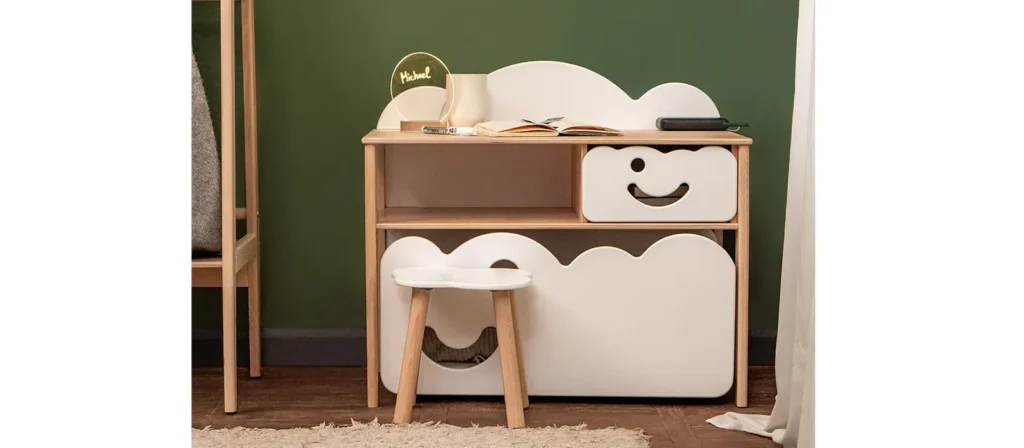
This piece of furniture not only supports organization but also promotes responsibility. When your child has access to their nightstand, they are encouraged to care for their items and keep their space organized.
9. Montessori Art or Wall Decoration: Inspiring Creativity
While Montessori spaces are typically minimalist, a carefully chosen piece of art can inspire creativity and enhance the child’s environment. Opt for simple, nature-inspired artwork or abstract prints that invite curiosity without being overwhelming. Avoid flashy, overly bright, or distracting images that could detract from the peaceful, calm atmosphere you’re trying to cultivate. Artwork should be placed at the child’s eye level, encouraging them to engage. Exposing children to art encourages aesthetic appreciation and fosters their creative imagination.
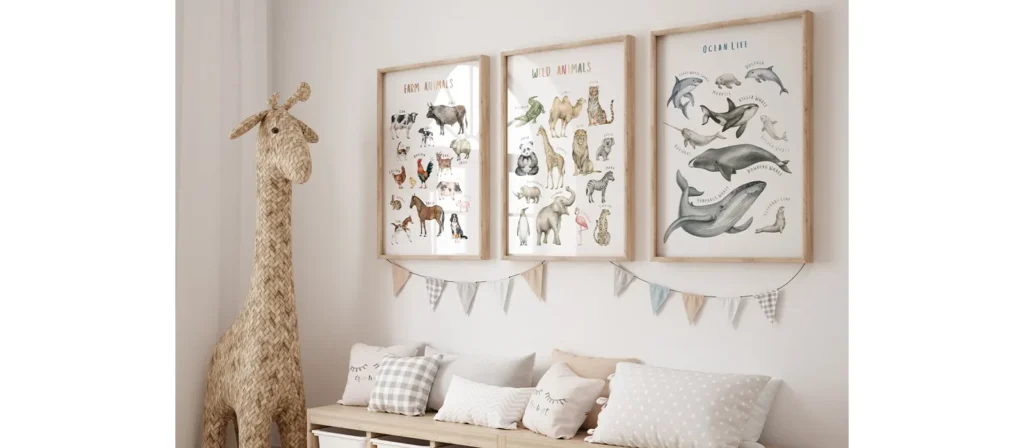
Keys to Montessori Bedroom Layout
Before diving into specific furniture and design ideas, it’s essential to understand the core principles that should guide your Montessori bedroom layout:
- Accessibility: Everything in the room should be within your child’s reach, from furniture to books and toys, to promote independence.
- Safety: All furniture should be child-sized, and sharp edges or hazardous items should be avoided to ensure the space is safe for exploration.
- Minimalism: Montessori emphasizes a simple, clutter-free environment. Limit the number of items in the room to avoid distractions and foster focus.
- Natural Materials: Opt for natural, organic materials such as wood, cotton, and wool, which are not only healthier but also align with the Montessori principle of respecting nature.
- Organization: Organize the space logically to make it easy for your child to put away and retrieve items. A well-organized space reduces stress and promotes responsibility.
Transform Your Classroom with Custom Furniture Solutions
Personalizing the Space: How to Involve Your Child in the Design of Their Montessori Bedroom
One of the most important principles when designing a Montessori bedroom is fostering a sense of ownership and independence. A room that feels like your child’s personal space encourages self-confidence and strengthens their relationship with their environment. A key way to achieve this is to involve your child in the design process. This gives them control over their surroundings and allows them to express their creativity, preferences, and growing sense of identity.
Start with Their Preferences: Get Input on Color and Theme
The first step to personalizing a Montessori bedroom is understanding your child’s tastes and preferences. What colors do they love? Do they have favorite themes or animals that inspire their creativity? You can give your child a sense of agency in the design process by asking them about their favorite colors, patterns, and interests.
- Color Selection: Let your child choose the colors for the walls or bedding. This could be done by showing them color swatches or small paint samples. Instead of bright, overwhelming colors, consider soft, calming tones such as pastels, earth tones, or muted shades that align with the Montessori philosophy of simplicity and calm.
- Theme Ideas: Ask your child if they have any favorite themes for their bedroom. Whether it’s a love for animals, nature, the stars, or even a minimalist style, incorporating these preferences into the room’s design can help them feel connected to the space. Remember that themes should not overwhelm the room but rather be incorporated subtly through artwork, textiles, or decor.
Choosing Furniture Together
Selecting the right furniture is a key part of a Montessori bedroom, but it can be a fun and interactive experience when you involve your child in the process. Child-sized furniture is essential to Montessori design, promoting independence and comfort.
- Let Them Choose Their Bed: If possible, allow your child to select the style of their floor bed. Some children may prefer a bed with a simple wooden frame, while others may enjoy a canopy or a bed with colorful accents. You can show them several options that fit the Montessori philosophy but let them express their preferences.
- Involve Them in the Desk or Storage Selection: A Montessori room typically includes a small table and chairs for independent work. Take your child shopping for the right-sized desk and chair, or involve them in assembling DIY pieces. They can also have a say in selecting storage cabinets or shelves to organize their toys and belongings.
- Choose Materials Together: Ask your child about the materials they prefer for their furniture—whether they’re interested in wood, natural fabrics, or any specific textures. Many children enjoy having a say in choosing natural materials like wood, cotton, and wool, which are important to the Montessori philosophy.
Add Personal Touches
Decorating with personal items can make the room feel even more special. Incorporating meaningful touches, like artwork, family photos, or handmade crafts, helps foster a connection between your child and the room.
- Select Art Together: Choose art that resonates with your child’s interests. You can buy prints, frame your artwork, or select calming, nature-inspired pieces. Let them have a role in choosing what is displayed on the walls.
- Incorporate Personal Items: Let your child pick a few favorite items—like stuffed animals, a blanket, or cherished toys—to help make the room more personal and inviting.
- Incorporate Natural Elements: Montessori environments often include nature-inspired elements like plants, wooden toys, and natural materials. Allow your child to help choose a plant to care for or decide on other natural elements to bring the outdoors inside.
Conclusion
Designing a Montessori bedroom that perfectly fits your child’s needs may take time and thoughtful planning, but the benefits are invaluable. Choosing the right furniture and layout creates a space that promotes autonomy, independence, and learning. Whether selecting a low-to-the-ground bed that empowers your child to get in and out on their own or providing easily accessible storage that encourages them to tidy up after themselves, each element plays a crucial role in shaping a productive, engaging environment. Ultimately, the Montessori bedroom setup should reflect your child’s personality and developmental stage while providing a foundation for lifelong learning and growth.
Discover Our Full Range of Products
Get access to our comprehensive catalog featuring top-quality furniture and play equipment for kindergartens and schools.


